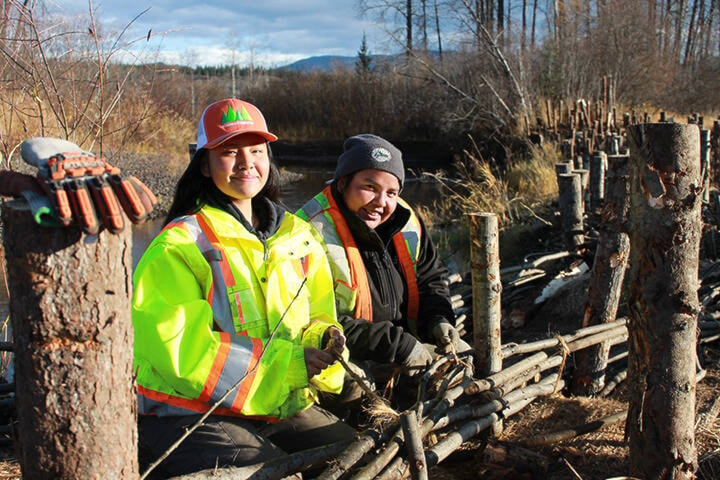The Healthy Watershed Initiatives’ riparian [riverside] restoration project, being led by A Rocha, has been in full swing since September. Restoration crews have been working with local landowners in Houston and Burns Lake to restore stream-banks along the upper Bulkley River. This project is a collaboration between a wide range of local stakeholders.
According to a press release from A Rocha, Indigenous workers from Wet’suwet’en and Lake Babine Nation members have been hired to do the bulk of the planting and local ranchers have provided equipment.
Project direction and planning has been provided by Morice Watershed Monitoring Trust, and a significant grant from the Healthy Watershed Initiative has provided the funding to create these jobs and restore habitat in the upper Bulkley.
Stream-banks as high as two metres erode each spring during runoff, causing a loss of agricultural land and introducing excessive silt into the river which can be harmful to salmon and other aquatic life. Using a low-tech approach, the slopes of the stream-bank are softened from vertical banks to gentler slopes.
Equipment is used to reshape the slope to one that is less prone to stream erosion. Spruce and poplar posts are driven vertically through biodegradable erosion control blankets to create structure that will withstand the stream power. Then, willow is woven in between the posts followed by willow and poplar being planted along the stream-bank and riparian buffer. Finally, spruce trees, bows and all, are placed over top of the whole thing to stabilize the soil and disrupt the stream power during high water.
Next spring these live willow and poplar stakes will take root and begin to grow a protective mat of roots and branches. This combination of physical structure and plantings is meant to strengthen the stream-bank soil matrix to withstand high water while dissipating the stream energy.
This project was initiated in the spring of 2019 as part of a multi-year, community-based watershed restoration program that is providing opportunities for land owners, First Nations and local organizations to address pressing issues such as stream bank stabilization, riparian recovery and river health.
The total cost of the project is estimated to be $540,000 with the majority of the funding coming from Healthy Watersheds Initiative as well as in-kind contributions from the Morice Watershed Monitoring Trust and Fisheries and Oceans Canada.
Have a story tip? Email:
Eddie Huband
Multimedia Reporter
eddie.huband@ldnews.net
Like us on Facebook and follow us on Twitter.
